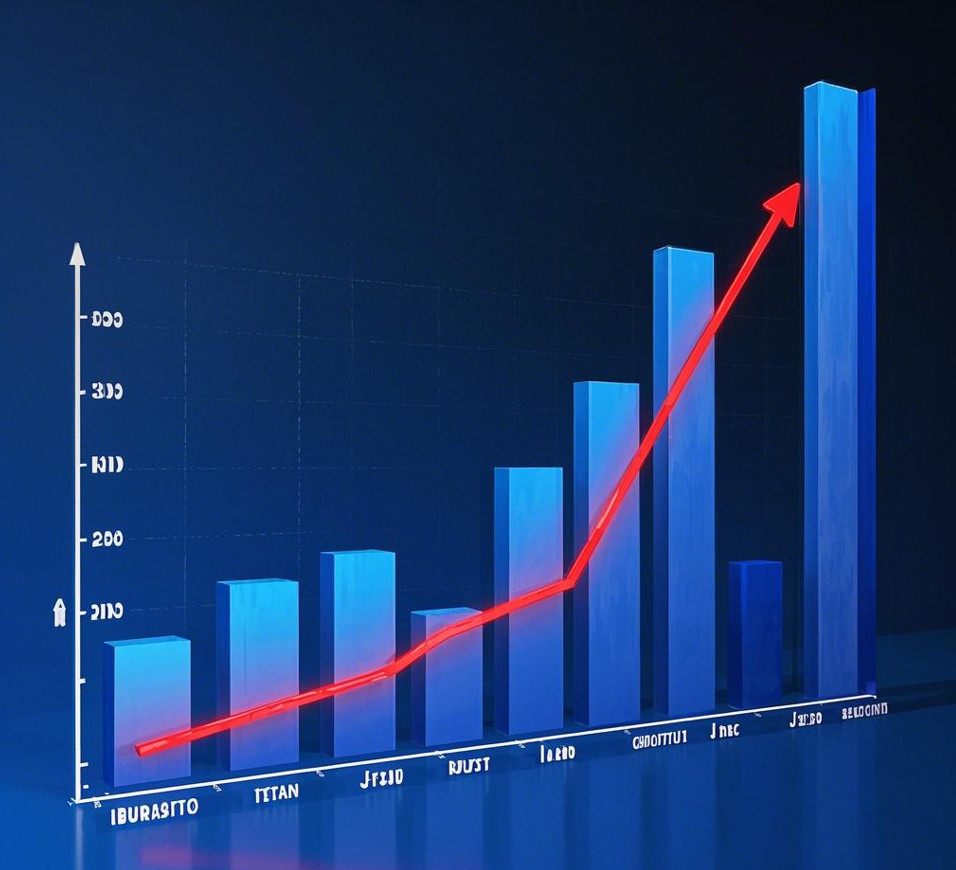
Recently, according to the data released by the US Bureau of Economic Analysis and the US Census Bureau, the US trade deficit in December 2024 reached US $98.4 billion, a quarter on quarter surge of nearly 25%, hitting a new high since March 2022. This data not only reflects the severe challenges facing US foreign trade, but also foreshadows its potential profound impact on economic growth and the job market.
Trade deficit, where a country's total imports exceed its total exports, is a common phenomenon in international trade. For the United States, it has long faced the problem of trade deficit, but the sharp expansion in December 2024 is particularly noteworthy. Behind this phenomenon are both changes in the global economic landscape and factors related to the economic structure of the United States itself.
From the perspective of the global economic landscape, with the deepening of globalization, trade between countries is becoming increasingly frequent. However, as one of the world's largest economies, the relatively weak manufacturing industry in the United States has led to a shortage of domestic product supply and a heavy reliance on imports to meet demand. In addition, the status of the US dollar as the world's major reserve currency also makes it easier for the United States to obtain external funds, which to some extent supports its trade deficit.
From the perspective of the economic structure of the United States itself, the service industry dominates, while the manufacturing industry is relatively declining. The imbalance of this economic structure has led to a deeper dependence of the United States on imported goods. Meanwhile, the consumption habits of American consumers are also an important factor. The American people tend to consume high and have a strong demand for various goods, which cannot be fully met by domestic production, thus increasing imports.
In addition, the implementation of some trade protectionism measures may also to some extent affect the trade balance of the United States. These measures may trigger countermeasures from other countries, thereby affecting US exports. Meanwhile, the instability of the global supply chain has also exacerbated the trade deficit to a certain extent. The delay in international transportation and insufficient production capacity have forced many enterprises to rely on imports to meet the demand of the domestic market.
The sharp expansion of the trade deficit cannot be ignored in terms of its impact on the growth of the US economy. On the one hand, an increase in imports means that domestic consumers can purchase more and more diverse goods, thereby improving their living standards. However, on the other hand, this also puts pressure on the domestic manufacturing industry, which may lead to the loss of manufacturing jobs and the hollowing out of the industrial chain.
In addition, the widening trade deficit may also raise concerns among international investors, thereby affecting the inflow of foreign investment. This is undoubtedly a potential threat to the US economy, which relies on external funding support. Meanwhile, the continued expansion of the trade deficit may also lead to fluctuations in the US dollar exchange rate, thereby affecting the international financial status and international trade competitiveness of the United States.
From a more macro perspective, the sharp expansion of the trade deficit may reflect a changing position of the United States in the global economic landscape. With the rise of emerging economies and the adjustment of global trade patterns, the United States needs to be more proactive in addressing these challenges to safeguard its economic interests and global influence.
The sharp expansion of trade deficit also has a significant impact on the job market. On the one hand, an increase in imports may put greater competitive pressure on the domestic manufacturing industry, leading to job losses and rising unemployment rates. On the other hand, with the deepening of globalization, some traditional manufacturing jobs may gradually be transferred to other countries, further exacerbating the employment problem in the United States.
However, it should also be noted that the expansion of the trade deficit is not entirely useless. In some cases, it may prompt domestic enterprises to engage in technological innovation and industrial upgrading, thereby improving production efficiency and competitiveness. Meanwhile, the increase in imports may also drive the development of related industries such as logistics and warehousing, thereby creating new employment opportunities.
Faced with the challenge of a rapidly expanding trade deficit, the US government and businesses need to take proactive measures to address it. On the one hand, the government can expand export markets by strengthening trade negotiations and cooperation with other countries, promoting trade liberalization and facilitation, reducing tariffs and non-tariff barriers. On the other hand, enterprises also need to strengthen technological innovation and industrial upgrading, improve product quality and competitiveness, in order to better meet the needs of domestic and foreign markets.
In addition, the government can increase investment in education and training to improve the quality and skill level of the workforce, thereby enhancing the competitiveness of domestic industries. At the same time, strengthening domestic infrastructure construction and improving the social security system can also help enhance domestic consumption capacity and confidence, thereby promoting economic growth and job market stability.

The U.S. third-quarter GDP growth rate, strikingly highlighted at 4.3%, not only surpassed market expectations but also earned the label of "the fastest in two years."
The U.S. third-quarter GDP growth rate, strikingly highligh…
Recently, US personnel intercepted a "Century" super oil ta…
According to Xinhua News Agency, the subtle changes in the …
The rapid development of artificial intelligence has brough…
In December 2025, Taiwan's political scene was shaken by a …
When Apple appears for the Nth time on the list of penaltie…